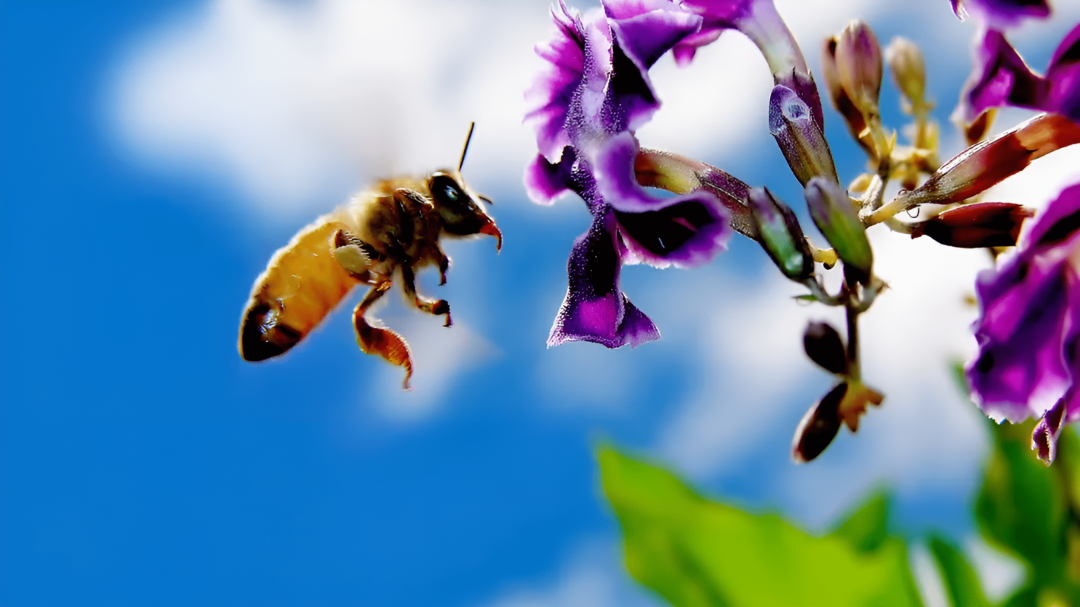April Dixon is an engineer by profession but describes herself as an amateur bee keeper. Her knowledge of the subject is expert, and her obvious passion for bees made for a fascinating lesson in ecology when she came to talk to the club.
April told us that ‘bees matter’. One third of the food we eat, including all fruit, depends on pollination. Bees pollinate 85% of all plants. According to April, they make a £200,000 billion global contribution. Pesticides and destruction of much of their natural environment is threatening this.
April urged us to fill our gardens with pollinating flowers, let our grass grow, and buy locally produced honey, which is much richer than supermarket honey produced in China or elsewhere outside the EU. That is likely to come from bees brought up on a diet of sugar water. Let your grass grow. Buy local honey. Advocate bee friendly policies and lobby government to ban pesticides.
Some mind boggling statistics for a Rotary Quiz night? There are 20,000 species of bees on the planet. Of the 270 species in the UK, there are 245 kinds of ‘solitary bees’ including mining bees, ground bees, and masonry bees. Then there are 24 different species of bumble bees, which live in small colonies of no more than 50 bees. This leaves the big honey producer, the honey bee, which lives in a colony of up to 80,000 bees, can successfully be farmed and was the focus of April’s talk.
The honey bee is an example of successful collectivism in action – the practice of giving a group priority over each individual in it. The bees’ selfless dedication to the good of the hive should be the envy of collectivist regimes throughout history. What those failed experiments in collectivism lack is the secret of the bees’ success. Pheromones – a chemical signal that triggers a social response. Honey bees live in large colonies with one queen, and a vast number of female worker bees and a smaller number of male drones. The key to it all is that the queen releases a powerful pheromone that can control anything between 50,000 and 80,000 bees.
The worker bees acting together are the directing mind of the colony. They decide where the hive should be, where the queen should lay her eggs, and whether the queen is strong enough to keep reproducing. Queens, double the size of a worker bee, can live for up to 8 years but do their best reproduction in first 2 to 3 years. If the queen begins to fade, the workers get her to make a new queen, then ruthlessly kill her off.
The worker bees decide on the number of drones to make. The drones’ only job is to mate with a queen – preferably from another colony. They consume a lot of food, so when winter comes, the worker bees with their characteristic ruthlessness chew the drones’ wings off and ‘chuck them out of the hive to die’.
Worker bees have different roles: guarding the hive with their lives, foraging on flowers, taking pollen from the foragers and packing it into little cells, concentrating nectar, creating bees wax to make a comb, and making honey. Some of them have a harder life than others: forager bees only live two to three weeks in the summer, working themselves to death. A nursing bee has a less taxing job and can live for up to eight months.
The bees swarm when they need more space, or need a new queen where the old one has ceased to produce pheromone. When the new queen is ready, the bees make their move. Two thirds of the hive fly out, full of honey, land on a high point, and send out scouts to find a suitable place for a new hive. When they’ve found it, the scouts do a ‘waggle dance’ to show the colony where the new place is, and off they go. There they build a new hive, the queen flies off, has sex with groups of drones, then returns to the new hive, releasing pheromone and laying eggs, distinguishing between workers and drones by the depth of the cell she makes. To make a drone, she only needs to lay an egg. For a worker, she lays an egg and adds some sperm to the cell.
Some more statistics. One worker bee produces no more than one teaspoonful of honey in its life, but a jar of honey is created by 2 million separate visits to flowers.
I must say that having heard April, I appreciate honey more than I used to, although I feel sorry for the two bees who gave their lives to make the heather honey on one slice of toast I had for breakfast today.

